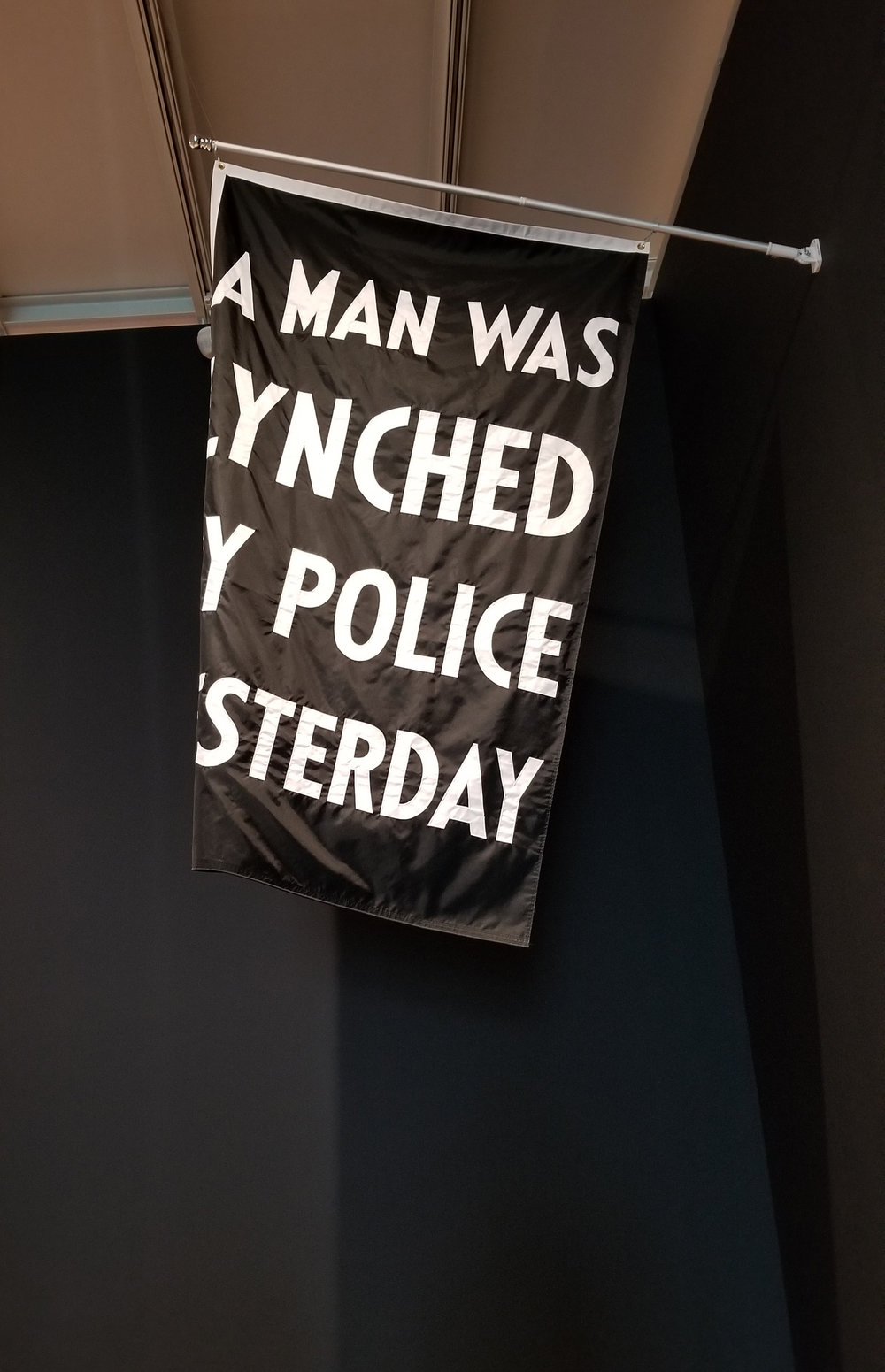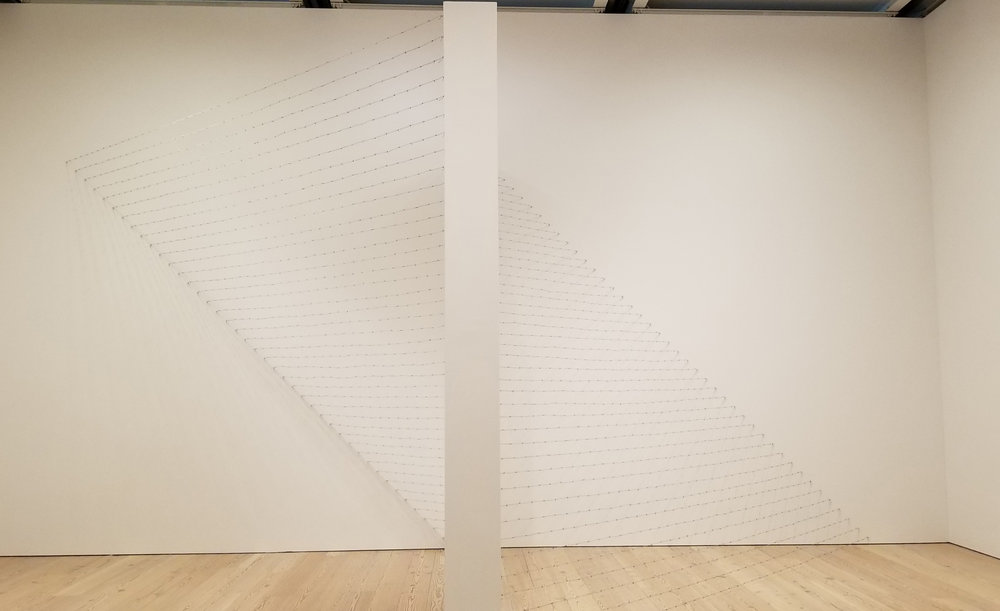An Emotional Gut Punch: Protest Art at the Whitney
April 13, 2018
by Jill O’Connor, Cohort ’17
The image of it flying was not only covered by the art world but by the mainstream press. We saw the images, but until I walked into the Whitney and saw it myself, it was just that – an image. Confusion, dismay, and disgust all rolled through me as I stared at Dread Scott’s black flag and its stark message: “A MAN WAS LYNCHED BY POLICE YESTERDAY.” Something broke, but something was already broken. This single flag epitomized a darkness that has always been part of this country and one that it seems will never lift. That is what makes this work so compelling; it addresses not just a single issue but also multiple issues that have long plagued our society. It is a symbol of inequality, injustice, fear, racism, fascism, discrimination and anger. We live with all of these every single day. However, the artist Dread Scott decided to say something using the model of the N.A.A.C.P, who flew a similar flag outside of their New York headquarters in 1936 after A.L. McCamy was lynched in Georgia. Scott’s 2015 flag was a response to the murders of Alton Sterling by the Baton Rouge Police Department and Philando Castille by police in Minnesota, and the hundreds of black men and teenagers who have been murdered by the police in this country over the last several years. Shooting has become the new form of lynching, the new way in which people are kept in line, made to feel afraid.

It was not just Scott’s piece that resonates the oppression that people go through every day. Melvin Edwards’ study in minimalism Pyramid Up and Down Pyramid (1969) also evokes ideas of incarceration, exclusion, and subjugation. Pyramid Up and Down Pyramid is made solely of barbed wire rising to the left and descending to the right. It seems to offer a way out or a way over, until the realization that it is barbed wire sets in. Then it only offers pain upon entry or exit. Though Edwards created this piece almost 50 years ago, it resonates in our current social and political climate that sees certain people as “other” and believes that the United States needs to build a wall to keep the “other” out. But that wall this current President wants to build will, just like Edwards’ work, hold us in, keeping us from exploration and suppressing those of us on the “right” side of the wall. Edwards’ work keeps the division clear just as this proposed wall would.

The Whitney exhibition showed exactly how little things have changed since the N.A.A.C.P hung their flag in 1936 or when Edwards built his barbed wire pyramid of exclusion in 1969. Usually, when art can still be appreciated for its relevance after over 80 years, it is something to be celebrated, but when it is art that shows how little we have progressed as a nation, then there is no cause for celebration.
